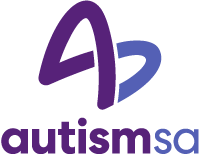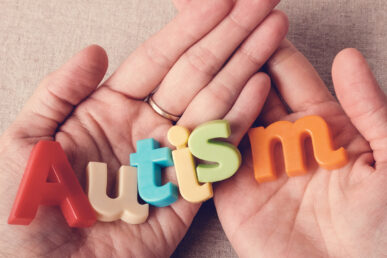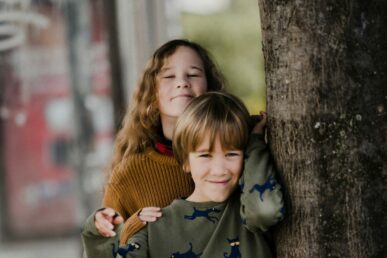What are the signs and characteristics of autism?
The age at which signs of autism can begin to be recognised will vary from person to person. In some cases, signs start to become apparent from six months of age and more predominant at around 18 months old, while for other children the behavioural attributes may not be recognised until they begin school, or for some individuals not until adulthood.
Just as the age at which signs of autism become apparent is different for every individual, the manner in which characteristics present themselves will differ too. Age, gender and cognitive ability can also influence rates of development and how characteristics of autism present.
“Age, gender and cognitive ability can also influence rates of development and how characteristics of autism present.”
This means that there are different signs and characteristics of autism that are likely to be evident depending on a person’s age, as well as common characteristics that may be present in a person on the spectrum regardless of how old they are.
Signs and characteristics of autism across all ages
Autism is lifelong and the characteristics that are displayed will be unique to an individual and will change across a lifespan.
Nevertheless, autism will impact people in various ways of all ages across two domains:
- Social communication and social interaction, and
- Repetitive or restricted behaviour, interests or activities.
Social communication and social interaction
One of the criteria for a person to be diagnosed as being on the autism spectrum is that individuals have persistent difficulties with social communication and social interaction.
For instance, children who are diagnosed as being on the spectrum will likely have developed speech and language differently. It might have been delayed, disordered, or it may not have developed.
“Children who are diagnosed as being on the spectrum will likely have developed speech and language differently. It might have been delayed, disordered, or it may not have developed.”
Communication also includes how non-verbal communicative behaviours are understood and used. This means that people on the spectrum may find it difficult to begin or maintain conversations, or to understand the facial expressions and reactions of others. Likewise, it may be that people with autism find it hard to make and maintain eye contact.
This can, in turn, mean that the intent of words, gestures or body language may not be able to be understood based on context alone, while the meaning of non-literal language (e.g., metaphors, idioms, sarcasm, etc.) may not be readily grasped.
Another characteristic of autism is that people on the spectrum may not alter the nature of their interactions based on who they are engaging with, i.e., there may be little or no change evident when an individual is speaking to siblings, work colleagues, people in authority, friends or employers.
Repetitive or restricted behaviour, interests or activities
People on the spectrum may display behaviours in social situations or in their interactions with others that are unexpected.
Individuals might perform certain motor movements frequently and repetitively. For instance employ ritualised, unchanging speech patterns.
It may also be that people on the spectrum display a limited range of behaviours, meaning that they insist on routines being adhered to and things always remaining the same. Similarly, it might be that autistic individuals have restricted interests, upon which they can become intensely focussed or fixated.
The responses of people on the spectrum to sensory inputs (e.g., sounds, smells, colours, movement, etc.) can also be unexpected. Individuals may become extremely reactive to the world around them, or alternatively not reactive at all. A person may also display an unusual interest in the sensory aspects of their environment, or find it difficult to filter out the background or seemingly unimportant noise.
“Individuals may become extremely reactive to the world around them, or alternatively not reactive at all.”
Some people on the spectrum may also find it difficult to engage in some forms of physical contact, such as shaking hands or fist-bumping, while being a part of a large group or crowd of people might be challenging.
Autism signs and characteristics checklists
If you think that your child may be on the spectrum, or if you think you may have autism yourself, we have produced useful checklists for babies, children, girls, boys and adults that highlight some of the characteristics and behaviours associated with autism.
However, please note that the provided information outlines some of the common signs and characteristics of autism and is not intended to be comprehensive or definitive, nor it is expected that any individual would display all of the characteristics outlined in this list.
It is also important to keep in mind that only trained, accredited specialists can make a diagnosis of autism.
Visit our checklists below:







